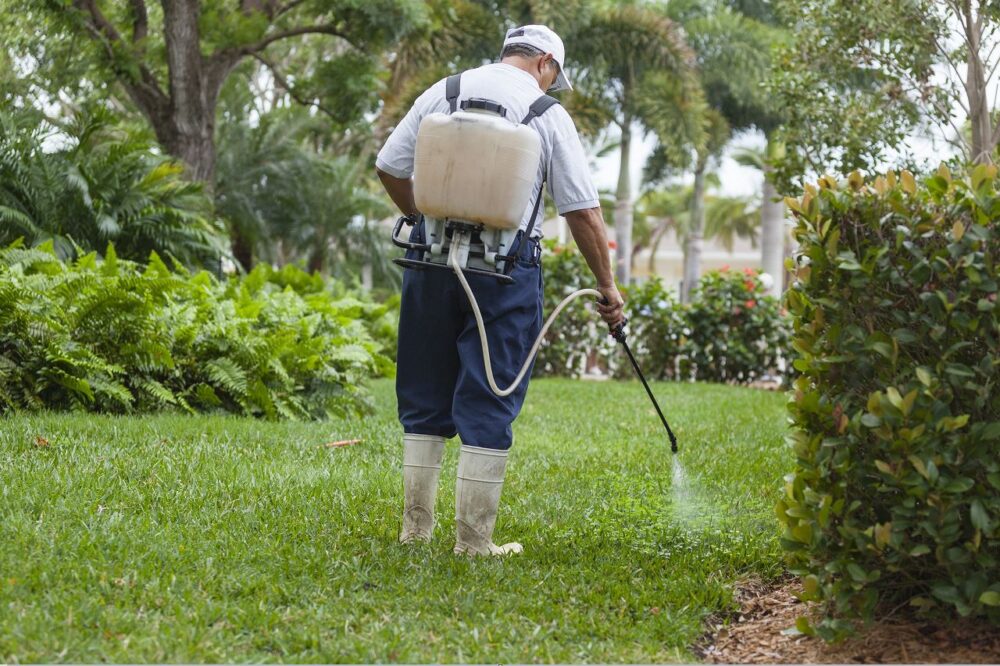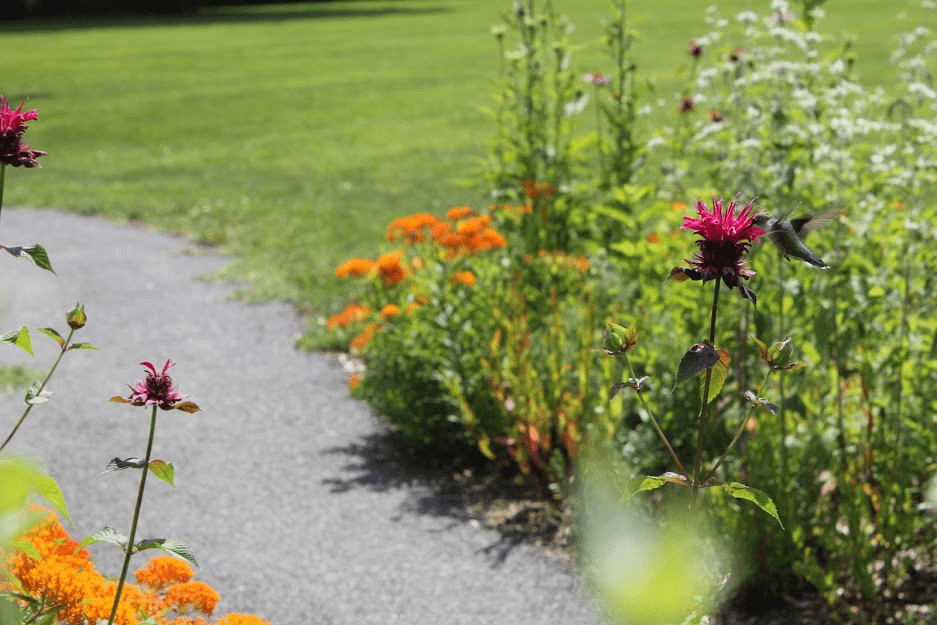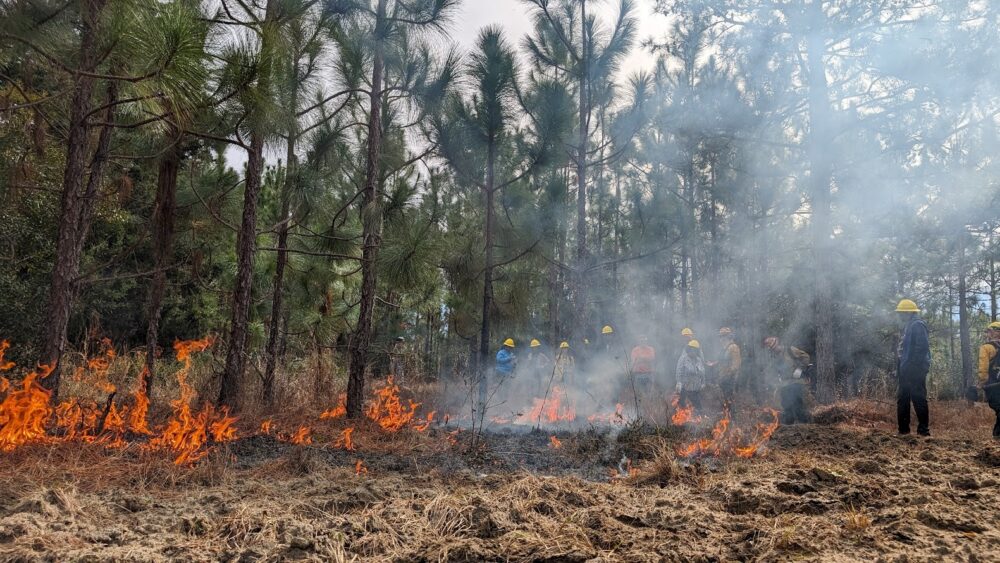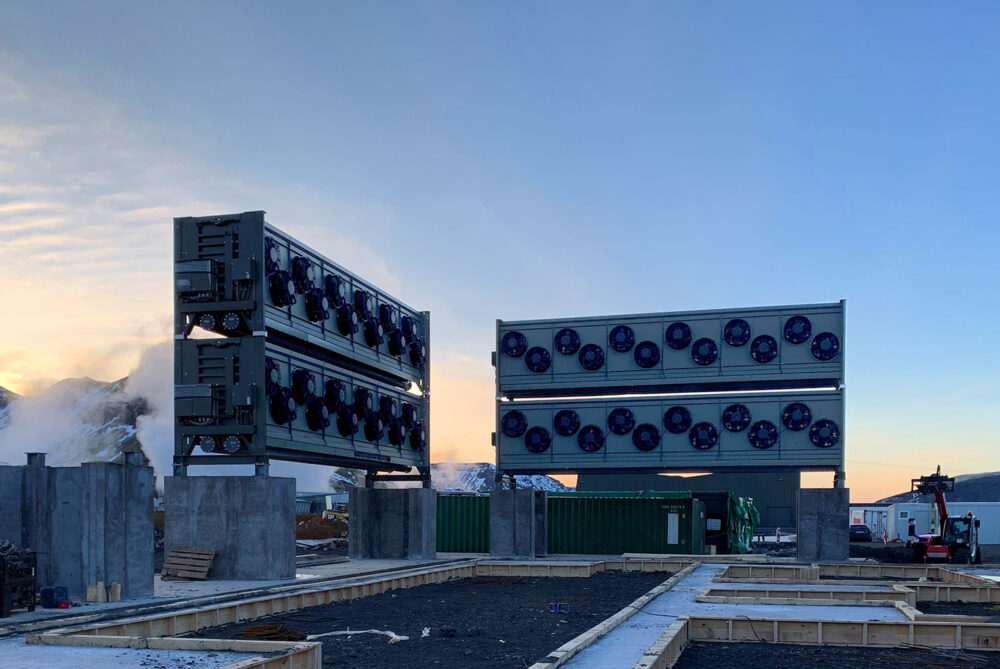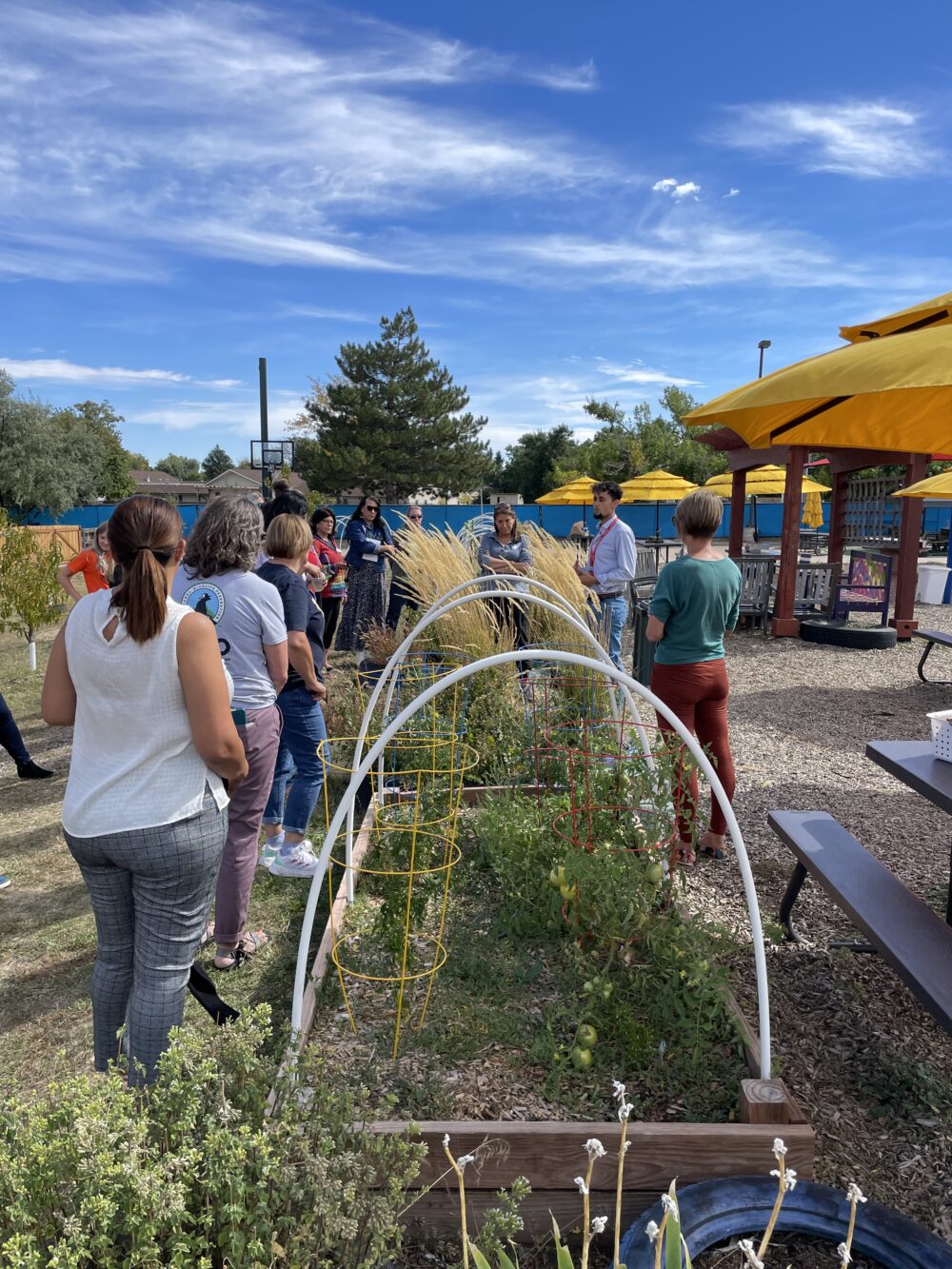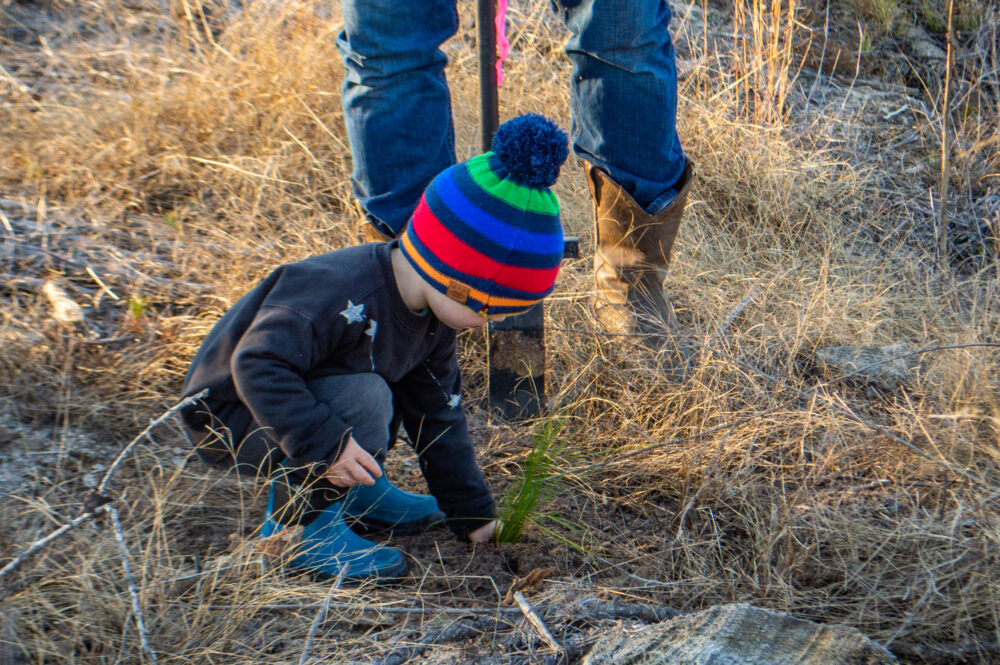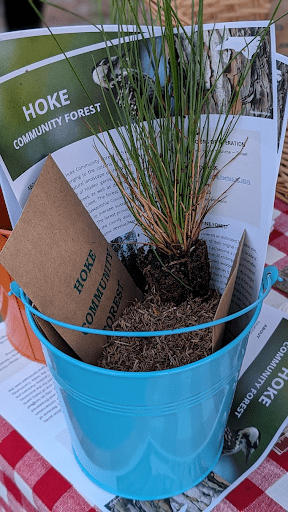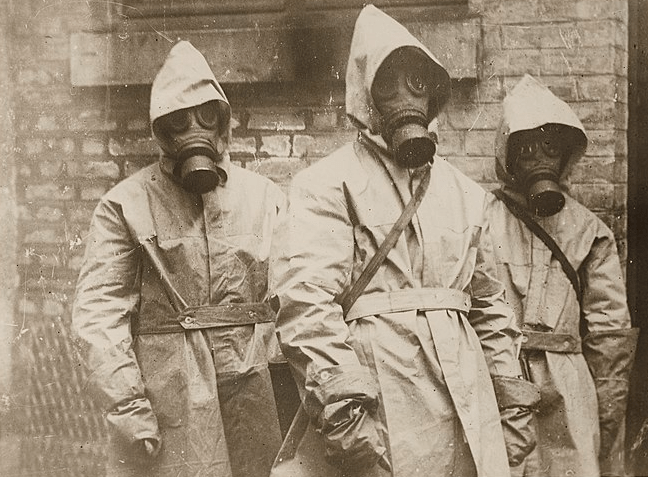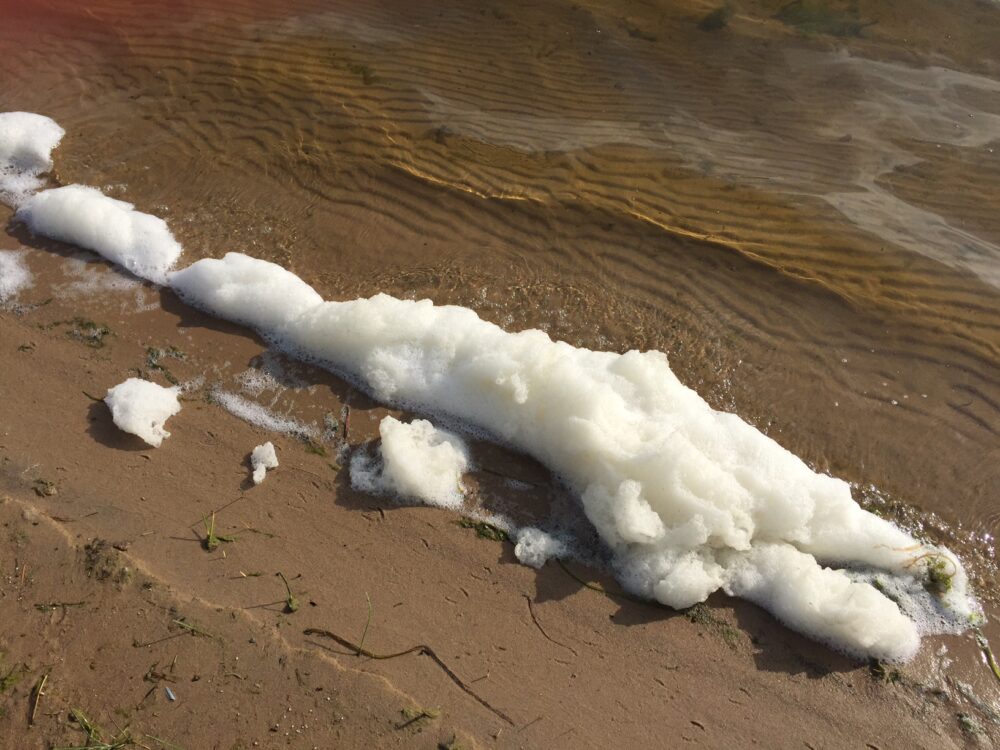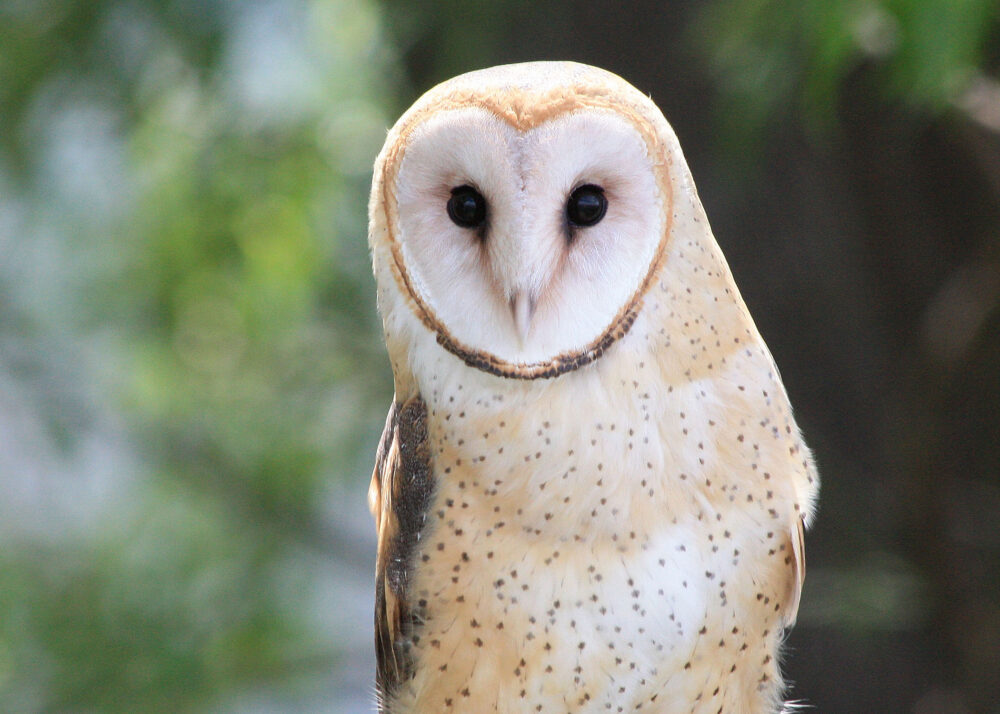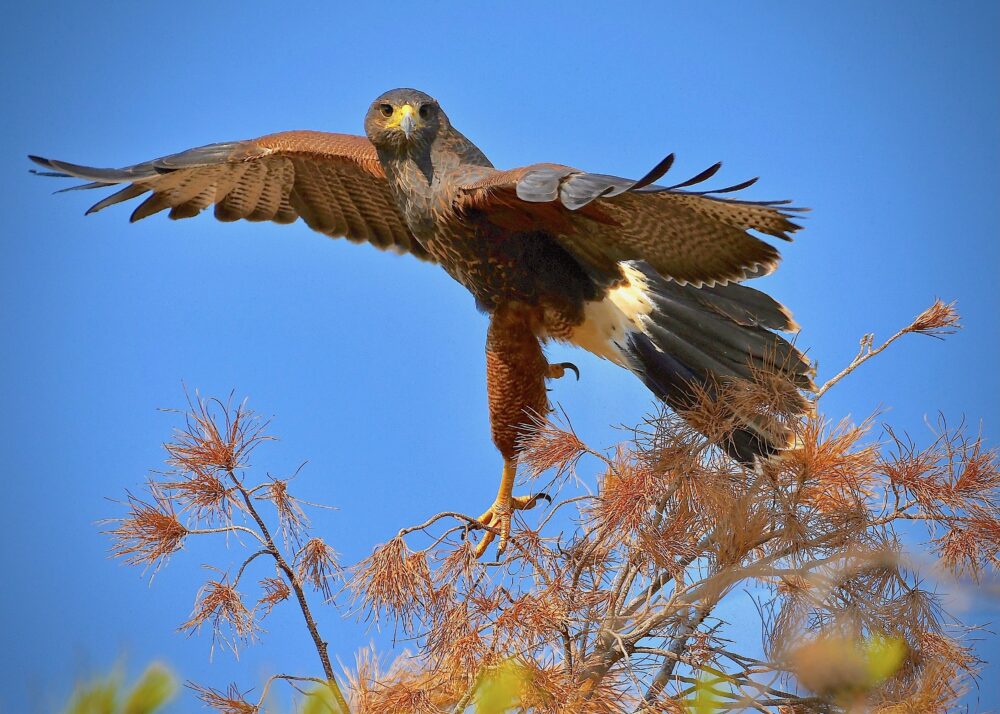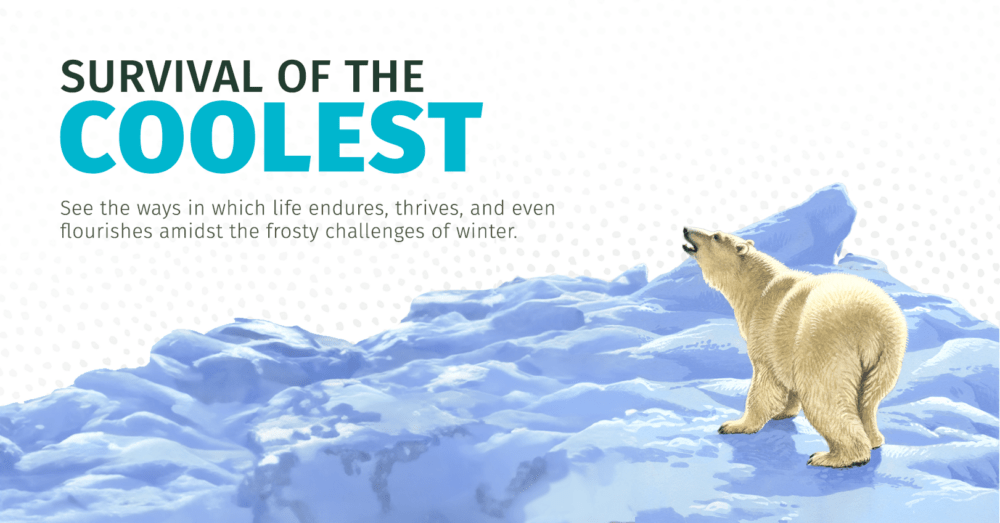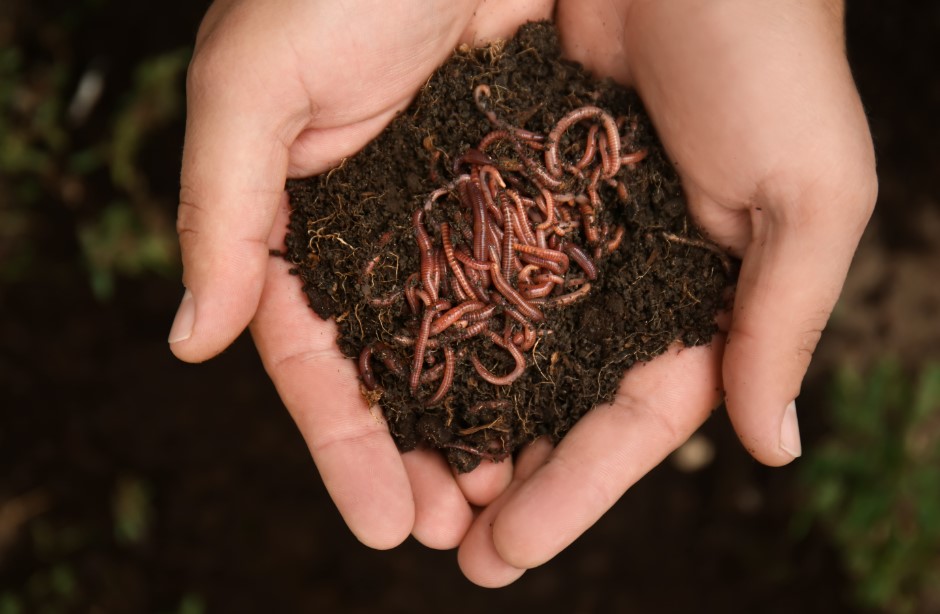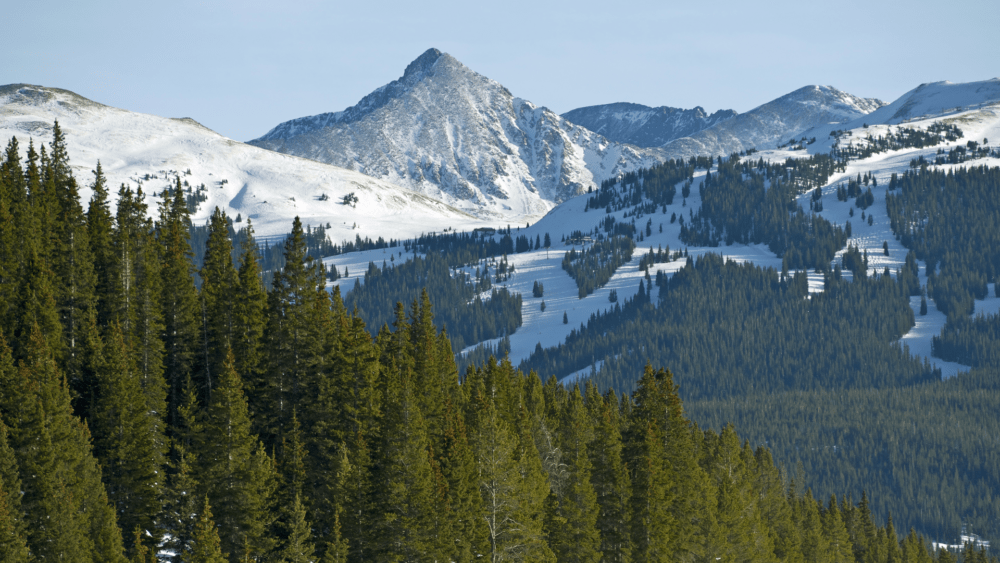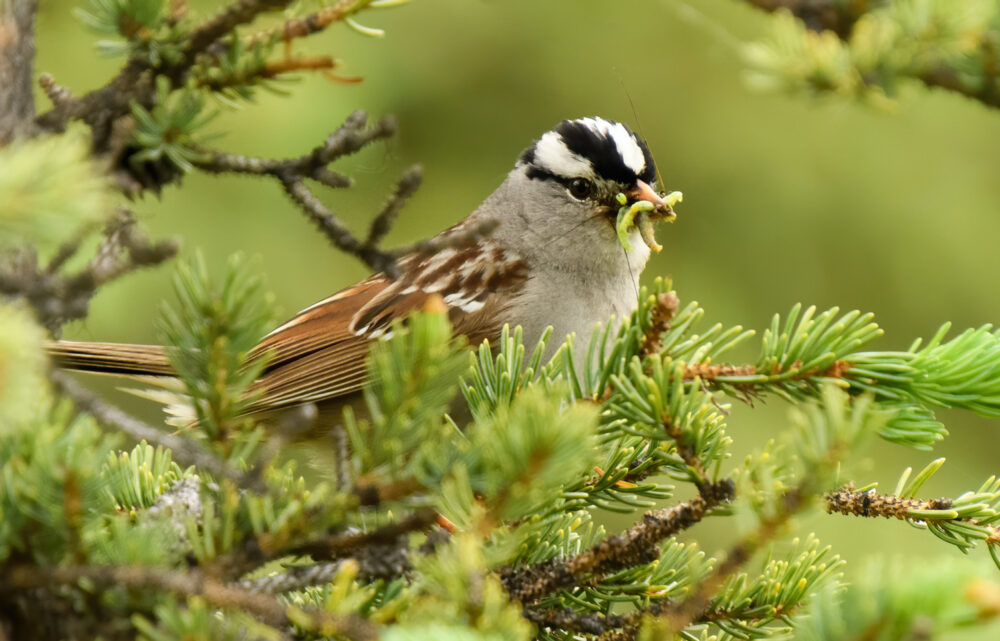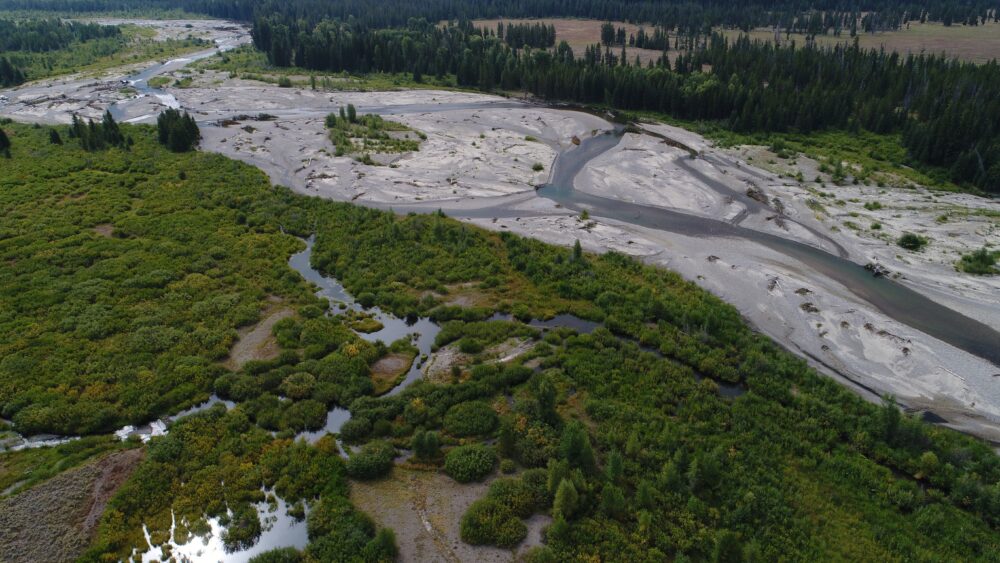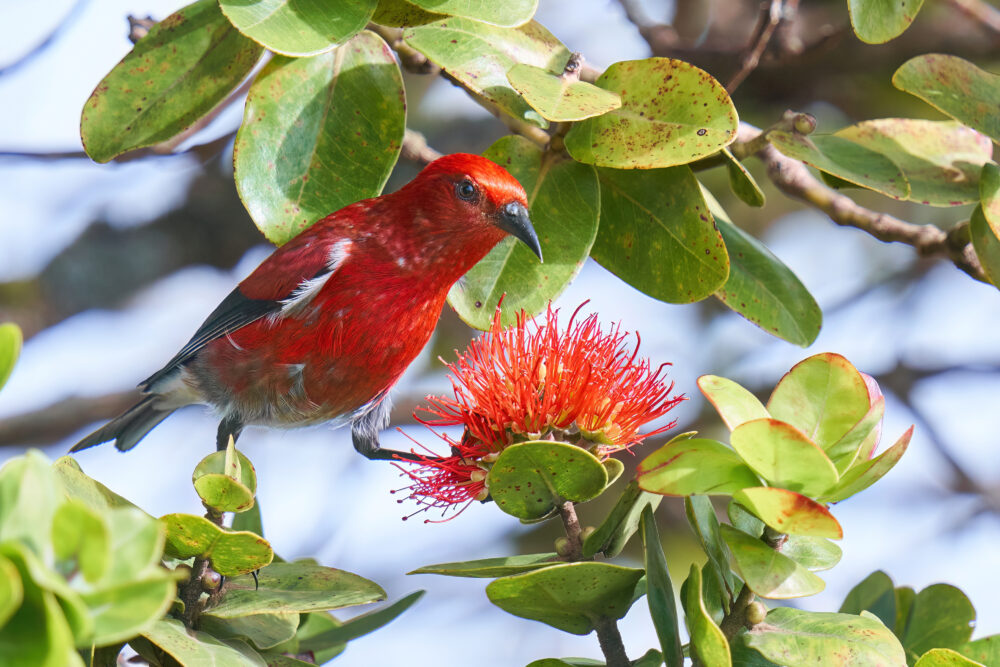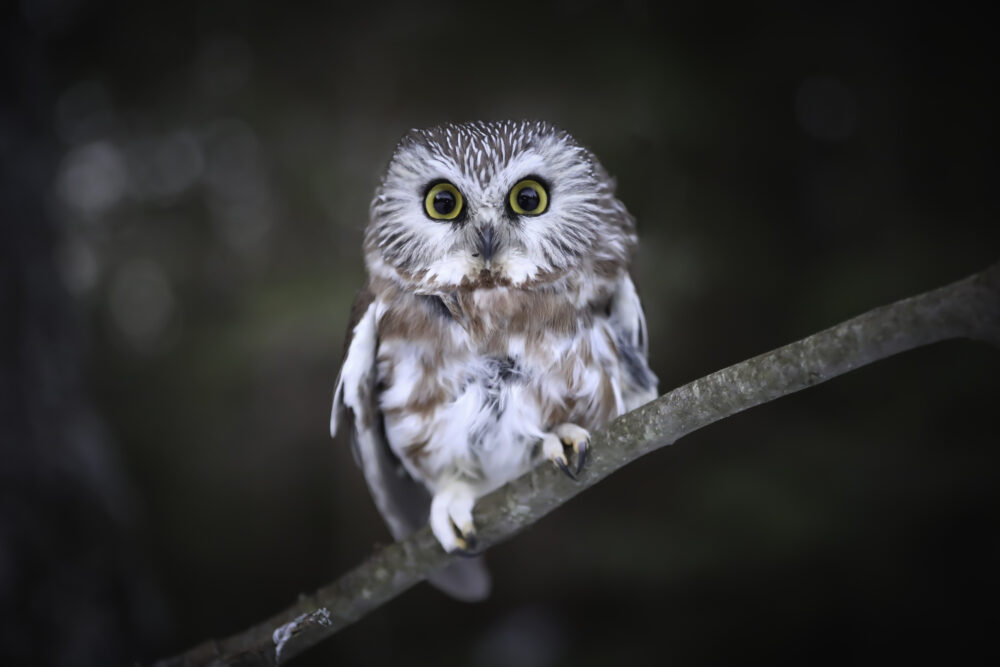We have much more to do and your continued support is needed now more than ever.
The Love Song of the Yosemite Toad
“Before the swallow, before the daffodil, and not much later than the snowdrop, the common toad salutes the coming of spring after his own fashion, which is to emerge from a hole in the ground, where he has lain buried since the previous autumn, and crawl as rapidly as possible towards the nearest suitable patch of water. Something–some kind of shudder in the earth, or perhaps merely a rise of a few degrees in the temperature–has told him that it is time to wake up.” George Orwell, Some Thoughts on the Common Toad
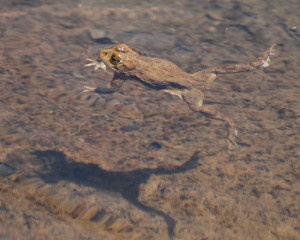
Californians should take pride in the Yosemite toad—it’s a native son found nowhere else on earth except the high elevations of the Sierra. Mountain life isn’t an easy existence for amphibians, and the toad spends half the year in hibernation. Once the snow melts—or even before as the critter has been observed tip-toeing over snowfields to reach their breeding grounds—the males emerge from hibernation and find a suitable pool to begin their annual search for a mate.
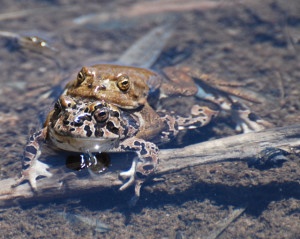
Last week, I wandered in the Gaylor Lake basin of Yosemite and encountered this delightful rite of spring, as my ears caught the unmistakable sound of toad music resonating in the alpine basin. It rose above the boisterous shouting of the Clark’s nutcracker, and could not even be diminished by the frequent noise of an airplane overhead. The Pacific chorus frog occasionally produced its loud “kreek-eeck” in challenge, but in this American Idol of the animal world, the day clearly belonged to the voice of the Yosemite toad.
Watch a video of my encounter with the Yosemite toads below:
[youtube]http://www.youtube.com/watch?v=IR8k4V-XCqo[/youtube]
After some patient waiting, I finally viewed the source of the trilling and hit the toad jackpot so to speak. Two pairs of toads in amplexus paddled by the rock I had perched on and I had an amazing (yet from the toad’s perspective perhaps a voyeuristic) view of their mating ritual. The smaller male toad, usually olive green in color, clasps onto the larger female and remains attached until she finds a location to deposit her eggs. When the tadpoles emerge about 12 days later the almost uniformly black color makes them easy to spot. One year, I observed Yosemite toad tadpoles while hiking up to the Dana Plateau—they appeared a bit spooky in appearance with just the two eyes penetrating the forceful black.
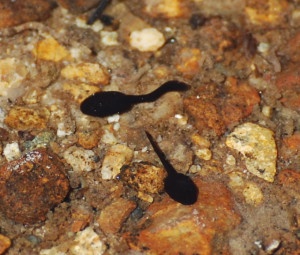
What’s causing it? Decreasing snow pack and drought conditions from climate change, and increased predation are two possible causes. For example, when the snowpack decreases (and some predictions call for up to a 90-percent reduction in the California future from climate change) breeding pools dry up before tadpoles can metamorphosize into adults. I’ll be watching these toads closely this year as we’ve experienced one of the driest winters on record in the Sierra. I’ve been visiting Gaylor Lakes in the spring for almost twenty years and was a bit startled over how parched the landscaped appeared in May.
For this year at least, and for years into the future, we’ll hope the love song of the Yosemite toad wasn’t in vain and those eggs will transform into more of this remarkable creature. For to silence their high-pitched trilling is to silence a rite of spring that is inextricably linked to the Sierra landscape—how can we let this happen on our watch?
Spring—in the Sierra or anywhere—is robust melody, a chorus full of equally important voices and to diminish even one singer is to diminish the entire song. Ensuring the future of the Yosemite toad makes for a better future for us as well. Let me quote Orwell’s eulogy once again, “I think that by retaining one’s childhood love of such things as trees, fishes, butterflies and–to return to my first instance–toads, one makes a peaceful and decent future a little more probable.”
National Wildlife Federation’s Storytelling Video Diary Series shares the candid tales of 10 NWF staffers from around the country; armed with their cameras in California, Wisconsin, the Pacific Northwest, Northern Virginia, and Washington, DC, these 10 staffers will share with you their individual trials, epiphanies and stories as they unfold in their daily adventures.



